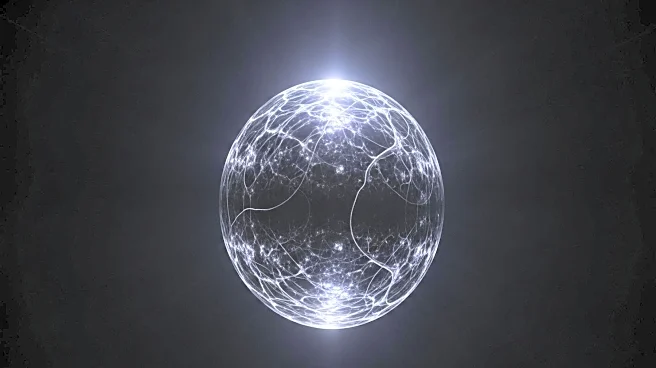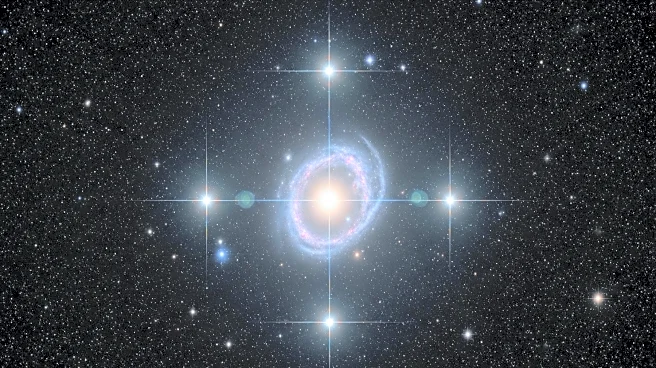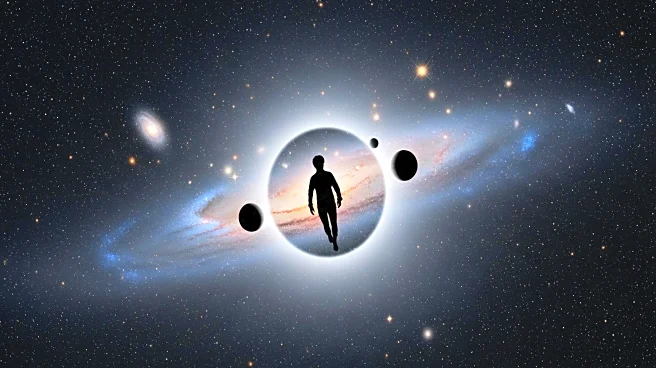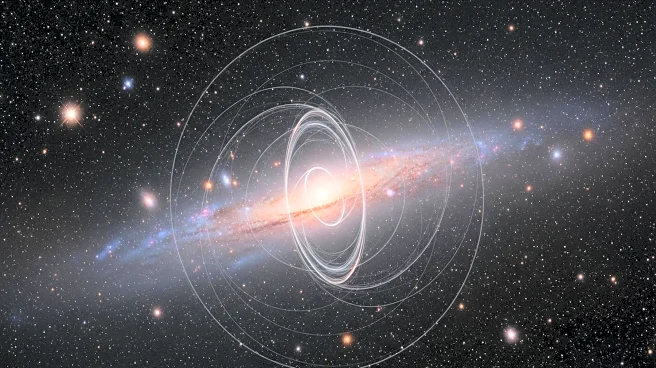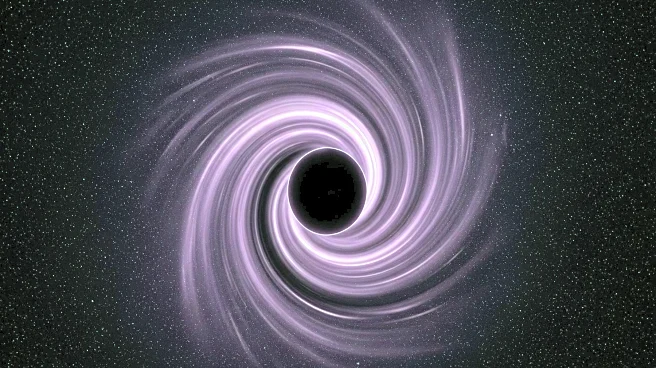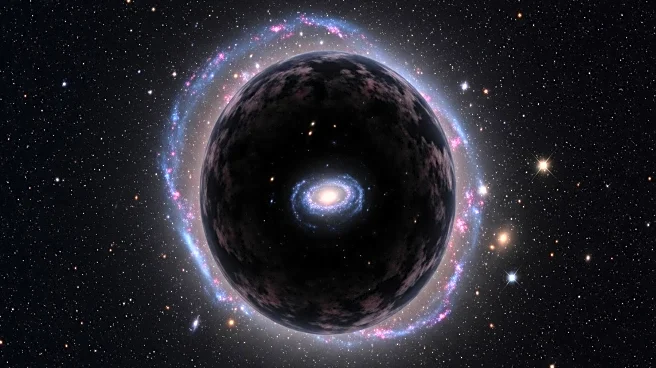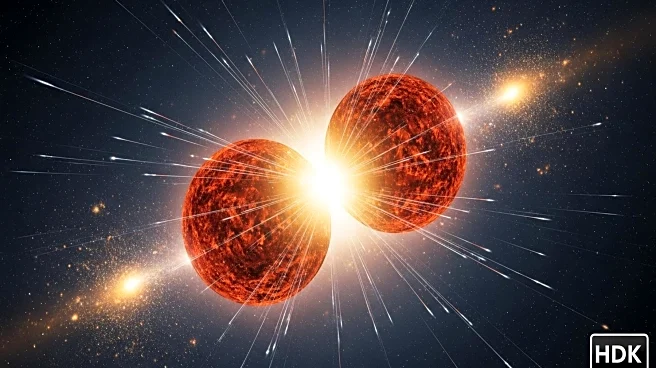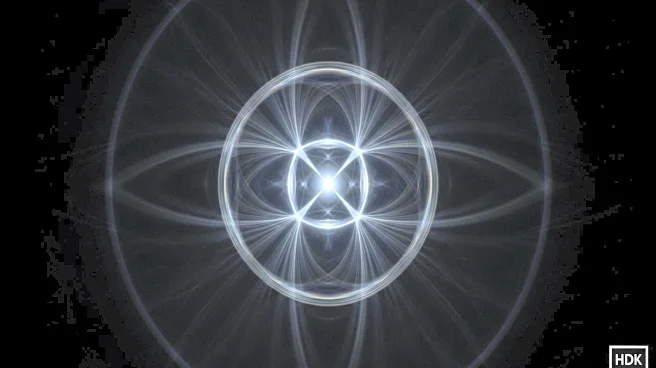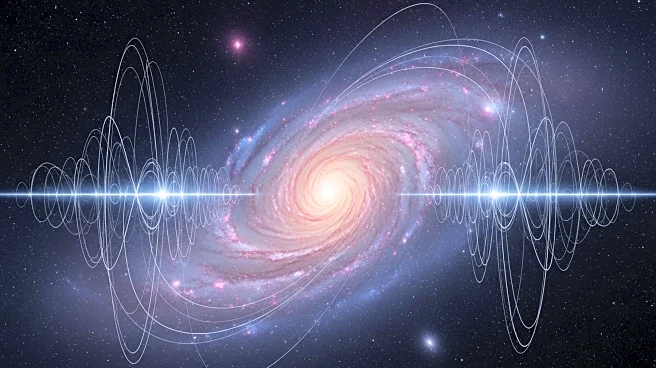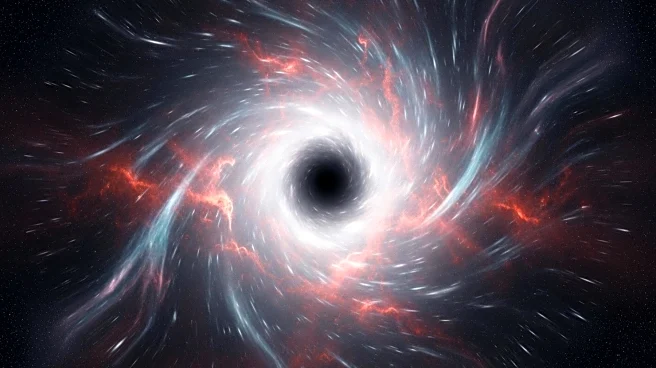What is the story about?
What's Happening?
Researchers from the University of Warsaw and the Max Planck Institute for Gravitational Physics have proposed a new candidate for dark matter: superheavy charged gravitinos. These particles, part of a theory unifying particle physics and gravity, are extremely massive and rare, making them difficult to detect. The JUNO detector, designed for neutrino physics, is well-suited to detect these charged dark matter gravitinos. The proposal builds on the idea that gravitinos, despite being electrically charged, can be dark matter candidates due to their rarity and massive nature.
Why It's Important?
The discovery of gravitinos as dark matter candidates could revolutionize our understanding of fundamental physics and the universe's composition. It challenges existing theories that have failed to explain dark matter's nature despite decades of research. Detecting gravitinos would provide evidence for a unified theory of gravity and particle physics, potentially leading to breakthroughs in understanding the universe's fundamental forces. This research could also influence future experimental designs and the development of new detection technologies.
What's Next?
The JUNO detector is scheduled to begin measurements in the second half of 2025, offering a realistic possibility for detecting gravitinos. Future research will focus on refining detection methods and exploring the implications of gravitino discovery for theoretical physics. The success of this endeavor could lead to new collaborations and advancements in particle physics and cosmology.
Beyond the Headlines
The proposal to detect gravitinos highlights the interdisciplinary nature of modern scientific research, combining particle physics and quantum chemistry. It also underscores the importance of international collaboration in advancing scientific knowledge. The detection of gravitinos could pave the way for new theories and models in physics, potentially altering our understanding of the universe's fundamental structure.
AI Generated Content
Do you find this article useful?
